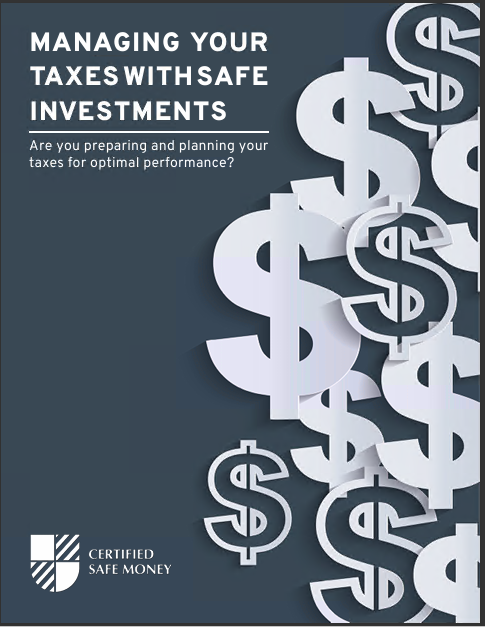Key Takeaways
-
Indexed Universal Life (IUL) policies offer flexibility, combining life insurance protection with potential cash value growth linked to market performance.
-
IUL policies can play a vital role in retirement planning, providing tax-advantaged growth and supplemental income options.
Rethinking Retirement Planning
Retirement planning isn’t just about stashing money into savings accounts or contributing to a 401(k). In 2025, the financial landscape offers diverse tools to secure your future. One of the increasingly popular options is Indexed Universal Life (IUL) insurance. But what makes IUL policies stand out, and how can they transform your approach to retirement planning?
IUL policies offer a dual advantage. They provide life insurance coverage while allowing you to grow cash value through market-linked performance. If you’ve been seeking a strategy that blends protection and potential, it’s time to explore what an IUL can do for you.
What Sets Indexed Universal Life Policies Apart?
Indexed Universal Life insurance is not your traditional life insurance. Here’s what makes it unique:
-
Market-Linked Growth: Your policy’s cash value grows based on the performance of a selected stock market index, like the S&P 500. However, unlike directly investing in the market, you’re shielded from market losses thanks to a guaranteed floor.
-
Flexibility: IUL policies allow you to adjust premiums and death benefits over time to align with changing financial goals.
-
Tax Advantages: The cash value grows tax-deferred, and withdrawals or loans against it are often tax-free.
These features combine to make IUL policies a powerful tool for long-term financial planning.
How IUL Policies Work
At its core, an IUL policy functions like any other life insurance policy: it provides a death benefit to your beneficiaries. But it goes further by building cash value linked to an index’s performance. Here’s a breakdown:
-
Premium Payments: You pay regular premiums, part of which goes toward the cost of insurance and administrative fees. The rest contributes to the policy’s cash value.
-
Index Crediting: Your cash value earns interest based on a market index. While gains are capped, a minimum floor ensures your value doesn’t decrease due to poor market performance.
-
Accessing Cash Value: You can borrow against your policy or withdraw from its cash value, offering a source of supplemental income during retirement.
By combining these elements, IUL policies provide a dynamic way to grow your wealth while safeguarding against financial risks.
The Tax Benefits of IUL Policies
Tax efficiency is a critical factor in retirement planning, and IUL policies deliver several advantages:
-
Tax-Deferred Growth: The cash value grows without immediate tax implications, allowing your investment to compound over time.
-
Tax-Free Withdrawals: Loans and withdrawals against the policy’s cash value are generally not taxed, provided they’re structured correctly.
-
No Required Minimum Distributions (RMDs): Unlike traditional retirement accounts, IUL policies don’t mandate withdrawals at a certain age, giving you greater control over your money.
These tax perks make IUL policies an attractive complement to other retirement savings vehicles.
Leveraging IUL for Supplemental Retirement Income
One of the standout features of IUL policies is their potential to provide supplemental income. Here’s how it works:
-
As your cash value grows, you can access it through policy loans or withdrawals.
-
These funds can help bridge income gaps during retirement, especially if other investments underperform.
-
Because loans against your policy aren’t taxed, they’re a cost-effective way to access funds.
The result? A flexible, tax-efficient source of income to support your retirement lifestyle.
Understanding the Costs and Trade-Offs
While IUL policies offer significant benefits, it’s important to understand the associated costs:
-
Premium Costs: Depending on your age, health, and coverage amount, premiums can be higher than term life insurance.
-
Caps on Gains: While you benefit from market-linked growth, there’s often a cap on how much interest your cash value can earn.
-
Complexity: IUL policies can be more complex than traditional life insurance, requiring careful management to avoid potential pitfalls.
Balancing these considerations against your financial goals is key to maximizing the benefits of an IUL policy.
Who Should Consider an IUL Policy?
Not everyone needs an IUL policy, but it can be an excellent fit if you:
-
Want life insurance coverage with the potential for cash value growth.
-
Are looking for tax-advantaged ways to diversify your retirement portfolio.
-
Have maxed out other retirement savings options and seek additional investment opportunities.
-
Value the flexibility to adjust premiums and benefits as your financial needs evolve.
If these points resonate, an IUL policy could be the right choice for your retirement strategy.
Integrating IUL Policies with Other Retirement Tools
An IUL policy isn’t meant to replace your 401(k), IRA, or other retirement accounts. Instead, it’s designed to complement them. By integrating an IUL policy into your broader financial plan, you can:
-
Diversify your income sources during retirement.
-
Hedge against market volatility with the policy’s guaranteed floor.
-
Optimize tax efficiency by leveraging tax-deferred growth and tax-free income.
A well-rounded strategy ensures you’re prepared for both expected and unexpected financial challenges.
Tips for Choosing the Right IUL Policy
Selecting an IUL policy requires careful consideration. Here are some tips to guide your decision:
-
Evaluate Your Needs: Determine how much coverage you need and the role you want the policy to play in your financial plan.
-
Understand the Terms: Pay attention to interest rate caps, participation rates, and the guaranteed floor.
-
Assess the Costs: Review premium requirements and fees to ensure they align with your budget.
-
Work with a Professional: Consulting a financial advisor can help you navigate the complexities of IUL policies and choose one that fits your goals.
By taking these steps, you can make an informed decision and maximize the value of your policy.
A Look at the Long-Term Potential
The long-term benefits of an IUL policy often outweigh the initial complexity. Over decades, the combination of tax-deferred growth, flexible income options, and life insurance protection can significantly enhance your financial security. With proper planning and management, an IUL policy becomes a cornerstone of a sustainable retirement strategy.
Building Financial Confidence for Retirement
Planning for retirement doesn’t have to be overwhelming. Indexed Universal Life policies offer a unique blend of protection and growth, making them an essential tool for those seeking to secure their financial future. Whether you’re in your 30s, 40s, or beyond, exploring the benefits of an IUL policy can open doors to a more flexible and confident retirement plan.
Your Retirement, Your Way
Retirement planning is deeply personal, and there’s no one-size-fits-all solution. Indexed Universal Life policies provide a versatile option for those looking to blend security with opportunity. By understanding how these policies work and integrating them into your broader financial strategy, you can take charge of your future and create a retirement plan that truly works for you.












